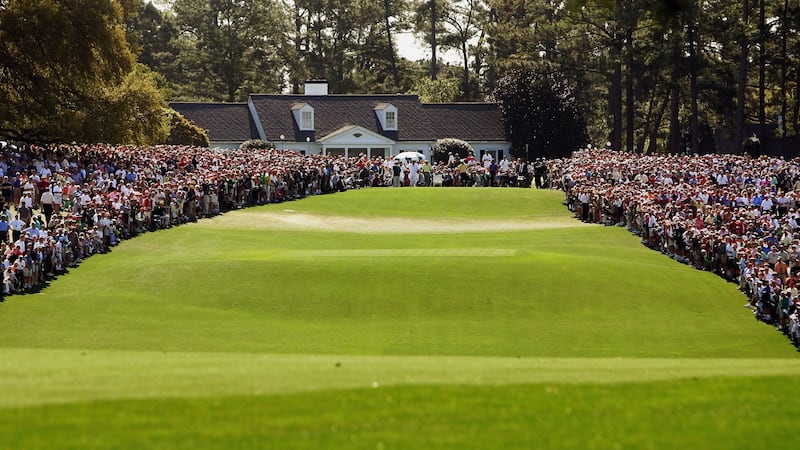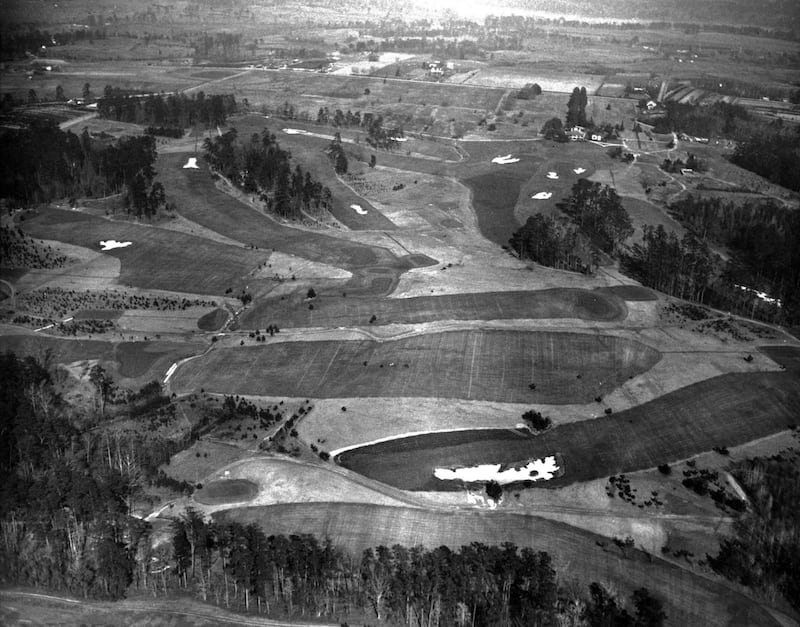As one of the four Majors in men’s professional golf, the Masters tournament is the baby, the whippersnapper of the lot. But it has made its own history, and has set itself apart on a number of fronts.
It is an invitational championship, and the only one to annually return to the same host course: Augusta National Golf Club; and, therein, lies the magic of it all, for the beauty of the venue itself is one that evokes mystique and an allure. A promised land, for golfers anyway.
Even to non-golfers, the mere mention of Augusta National has an aura. I'd be a rich man if I'd got a euro from anyone who thought they were the first to ask if they could travel in my suitcase. And, since my first visit there in 1991 to cover that Masters for the old Irish Press (it was won by Ian Woosnam), many things have changed. From the perceived Tiger-proofing of the course, the development of new practice facilities and, from a media perspective, the construction of a state-of-the-art media centre with sit-down dining. But what has remained constant is that the spine still tingles every time you walk through the security gates and onto the grounds.
The city of Augusta itself is hardly a thing of beauty. There is much baggage. Myself and my RTÉ colleague Greg Allen have shared a townhouse each year down by the Savannah River for much of our time covering the tournament and the route to the course is one through Olde Town and down Broad Street where the largest monument is one known as the Augusta Confederate Monument.
It's a mix of granite and marble dedicated in 1878: atop the structure is a soldier of the Civil War, a man called Barry Benson. At its base are life-size statues of General Robert E Lee, Thomas R Cobb, William Walker and Stonewall Jackson. The words, "No nation rose so white and fair, None fell so pure of crime, Our Confederate Dead," completes the inscription.
Not too far away is a dedication of a different sort, to the “Godfather of Soul,” with an avenue - James Brown Boulevard - named in his honour.
The streets around the city feature an eclectic mishmash of businesses. Fine dining restaurants next to strip clubs, pawn brokers and bail bonders. Any amount of churches, of all denominations. In truth, the downtown area is typical of so many American cities of its size and type.

And, yet, what sets it apart is the annual Masters tournament which brings patrons - spectators in any other week of the golfing year - from all over the world to a city in Georgia where Augusta National Golf Club off Washington Road has evolved into a golfing mecca. One where the roars of the crowds seem louder than anywhere else and where the colours of the flowers - the azaleas and the camellias, the nandina and the firethorn and a myriad of others - all appear more vibrant.
The sand in the bunkers too is spectacularly white and there is hardly a blade of grass out of place on the entire grounds. Pristine, is what it is.
For those who walk through the gates and onto the course for a first time, the most remarkable aspect to take in is the terrain itself. Television doesn’t manage to capture the massive undulations at all. The drop in elevation is immediately apparent, as the wide expanse from the first fairway and beyond the ninth fairway is the image that first greets spectators. To provide some perspective, the difference from the 10th tee box to the low point of the 10th fairway is greater than the height of the Statue of Liberty.
In fact, the drop from the highest point on the course (the back of the first green) to the lowest (Rae’s Creek in front of the 12th green) is 175 feet, one foot less than the height of Niagara Falls.
When Dr Alister Mackenzie, who originally trained as a surgeon before discovering a flair for golf course architecture, was approached by the legendary amateur golfer Bobby Jones to transform an old fruit orchard he had identified in south Georgia into a golf course, the plan, in Jones's eyes, was to "develop a golf course and a retreat of such nature, and such excellence, that men of some means and devoted to the game of golf might find the club worthwhile as an extra luxury."

So, from the outset, exclusivity and excellence was, shall we say, par for the course.
The first Masters in 1934, two years after the course was completed, had a field of 60 players, with the tournament won by Horton Smith, and over time different traditions evolved. One of them is symbolic, the presentation of a member's green jacket to the winner, a tradition which started in 1949 when Sam Snead won.
Another is the pre-tournament champion's dinner, where the previous year's champion hosts and sets the menu. Cheeseburgers and milkshakes in the case of Tiger Woods. Cottage pies from Danny Willett. Spanish lobster and his mother's home-made ice cream from Sergio Garcia. No Irish stew yet.
One of my own rituals each year is to take an early-morning walk out to Amen Corner on the Monday, the start of the championship week. To work my way down the hill, across the first and ninth fairways, and onwards to the 11th green. To stop and take in the beauty of the 12th hole, arguably the most picturesque Par 3 in the world of golf.
To smell. To see. And then onwards to the 13th green. To soak it all in, to start the week; a walk among the towering pines that’s almost therapeutic, to be honest.
And, at some point during the week, it would not be uncommon to see someone get down on bended knee around that stretch of holes christened Amen Corner and to make a proposal of marriage; while, on the flip side, there are those whose last wish is to have their ashes spread on that famous terrain, a deed which must be done surreptitiously by those complicit in honouring such requests.
For those who have managed to get their hands on patron tickets (and the process is actually very transparent, with prospective attendees able to register online for annual ticket lotteries), there are other kinds of rituals - and rules - to adhere to.
Once through the gates, many will walk (not run) to favoured, identified positions to leave green deckchairs (more often than not with a business card inserted) at their chosen position. For that given day, that piece of prized real estate is theirs. The deckchair will remain wherever, by the Par 3 16th, behind the 18th green perhaps. Untouched and unused by anyone else for the day while the owner goes around the course and maybe indulges a pimento cheese sandwich.
There are lots of no, nos for attendees. No mobile phones, or laptops. No radios. No weapons. No flags or banners. No golf shoes with metal spikes. No ladders, periscopes or selfie sticks. And definitely no autographs on tournament days.
What there is, though, is a magic all of its own. There is no tournament like the Masters, no tournament venue as manicured. For those players who get the prized invitation in the post each year to play, the trip down Magnolia Lane is one that brings with it confirmation that they belong among the very elite of their profession.
Pádraig Harrington frequently recounts his first time ever to drive down Magnolia Lane. It was back in 2000 and he'd won the Sao Paolo tournament in Brazil on the European Tour the previous week. There is a uniqueness about the setup around the Augusta National colonial-style clubhouse, with tables and chairs set up on the lawn to the front and only a rope separating those privileged ones from the patrons on the other side, and on arriving to there the first person Harrington met was a familiar face. The GUI president Paddy Murphy who was seated beside an older gentleman, none other than Sam Snead.
As Gary Player - who in recent years has joined Jack Nicklaus as an honorary starter in hitting a ceremonial tee shot ahead of the first round of the Masters - describes it: "if there is a golf course in heaven, I hope it's like Augusta National. I just don't want an early tee time!"



















